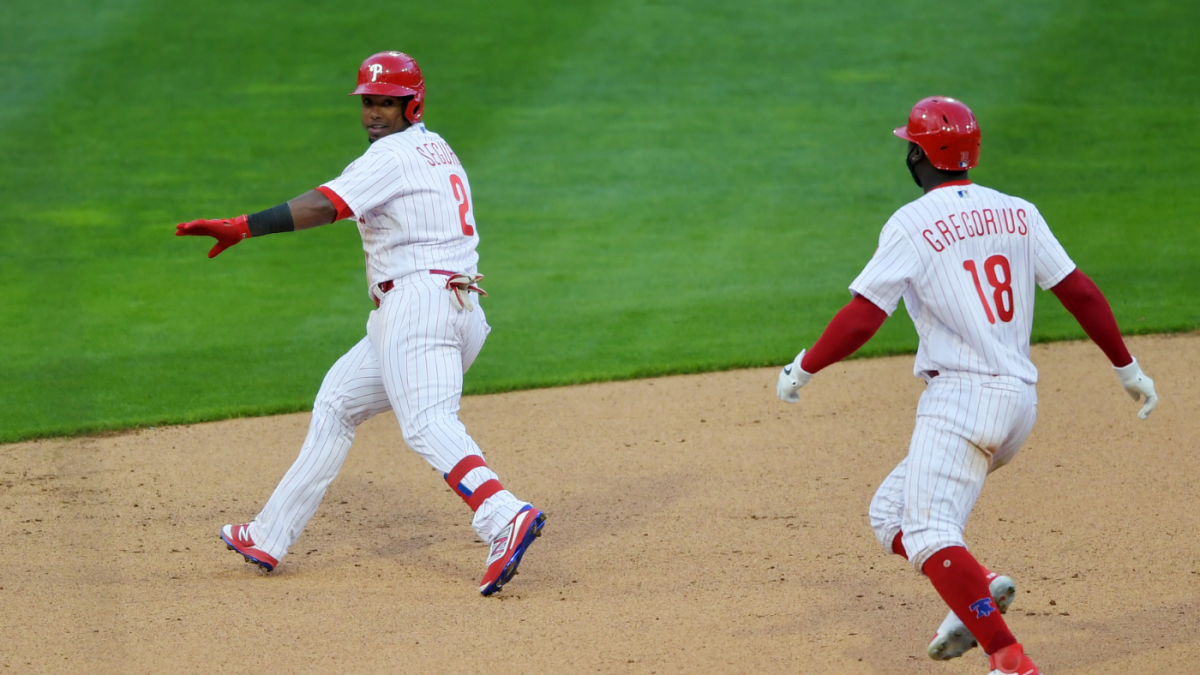
Of the 13 MLB games that wound up being played on Opening Day, four went to extra frames. This of course meant that the extra innings rule that’s been in place since the start of the 2020 season wound up playing an outsized role on one of baseball’s signature days on the calendar.
For the uninitiated or the willfully forgetful, each half inning beyond the ninth — i.e., extra innings — in MLB now begins with a runner on second base and no outs. The damnable specifics from Thursday:
- The Blue Jays topped the Yankees in 10, with that automatic runner scoring the go-ahead run. Randul Grichuk led off the inning with an RBI double. Yes, he led off the inning and tallied an RBI that didn’t come on a home run. “Anything is possible” numbers among the greatest lies ever told, but there’s something to it in this instance.
- The Brewers won on a walk-off fielder’s choice when an Orlando Arcia grounder to second plated the automatic runner.
- Bryce Harper served as the Phillies’ automatic runner in the 10th inning against the Braves. He advanced to third on a ground ball and then scored the winning run on a Jean Segura single down the line that probably would’ve been playable had the corners not been in on account of Harper.
- In Seattle, Giants reliever Jose Alvarez in the 10th walked three straight batters to force home the charity runner.
The idea, which is a sound one, is to cut down on marathon-length tilts that go, say, 13, 14, 19 innings and on rare occasion beyond. Given the ongoing pandemic conditions, this makes sense, and it also makes sense when it comes to avoiding mangling pitching staffs and layering on roster-wide fatigue. It’s debatable whether it was necessary to keep the wrinkle intact for the 2021 season, but let’s say it is. The danger is that we get conditioned to it, and it becomes a permanent rule in MLB.
Why is that a problem? It’s not that it’s unfair or anything like that — each team gets that gift runner, after all. Rather, it turns baseball into something baseball-adjacent when the inning count reaches double figures, partly in the name of convenience. At this point, we’re wading into the subjective territory of aesthetic preference, but it says here that giving each team an unearned baserunner amounts to a soft corruption of the sport.
Admittedly, there are no ideal solutions given that the old model — allowing games to reach conclusion without the aid of automatic runners no matter how long it takes — probably won’t be return now that we’ve been conditioned to something other than that. As well, some kind of fail-safe to prevent, oh, five- or six-hour games is generally popular among players, front offices, and commissioner Rob Manfred, who seems to like baseball best when there’s less of it. Those are important stakeholders in the discussion, and there’s really not enough of a consensus among paying customers to knock them off that course.
So if we grant that the old structure to extra-inning games — i.e., “let all available gods sort it out no matter how long it takes” — isn’t coming back, then we should figure out a more palatable solution than what’s going on now. The answer, dear reader, is to allow ties. If influence and the power of agency were clothing, then this scribe would stand before you more nude than Clark the Cub. Nonetheless, yes, he proposes ties.
More specifically, MLB should ditch the automatic runner and negotiate a new rule with the players — one that says any game that remains deadlocked after 12 innings shall be a tie in the standings. This gives each team nine additional outs after the ninth in which to break a tie but also prevents the longer games and their capability to grind the souls of participants into a fine powder. Also, know that this wouldn’t happen all that often. In the last full normal season of 2019, just 0.43 percent of total league innings took place after the 12th inning. The champion Nationals, for instance, played only one (1) regular season game that lasted longer than 12. Yes, there will be ties, but there won’t be many of them. This, by the way, is precisely the system used at the highest level of professional baseball in Japan.
It’s further worth nothing that ties — unlike pretend baserunners — are part of MLB’s history. They were particularly common in the early days of the sport, when stadium lights did not yet exist and thus darkness often put a stop to games. A total of three World Series games ended in ties for that very reason. If that’s too long ago for you, then know that in 2016 the Cubs and Pirates played to a 1-1 tie because weather halted things in the sixth inning.
As for how to account for ties, “do whatever” is the appropriate answer. Don’t count the games if we want. Count them as half a win and half a loss when calculating win percentages. The particulars aren’t all that important because they’ll be pretty rare. If the alternative is seeing what we saw in four different cities on Opening Day, then bring on the ties. Not many of them, mind you, but enough to eliminate the need for the scoring of decisive runs that are spectral in nature.
